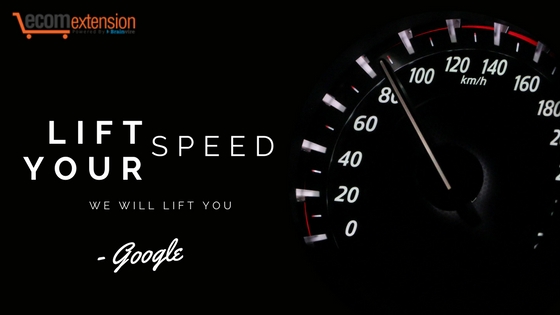
Do you sell online?
Here is something to look at:
Recently, Google has announced that mobile page load speed will be a ranking factor for mobile searches, starting in July 2018.
“The “Speed Update,” as we’re calling it, will only affect pages that deliver the slowest experience to users and will only affect a small percentage of queries. It applies the same standard to all pages, regardless of the technology used to build the page. The intent of the search query is still a very strong signal, so a slow page may still rank highly if it has great, relevant content.”
-Google’s Webmaster Central Blog
Decoding the Google’s algorithm for mobile searches, mobile page load speed will be considered as a ranking factor.
Ecommerce apps and Mcommerce apps are grown in popularity with significantly advanced features such as voice-based search, immersive experiences, omnichannel presence, modern functions, and engaging concepts to lure users.
In efforts to engage online shoppers, websites and apps need to be updated with latest functionalities, unique user-experience, and high-quality images, and attractive product pages. apps having high-quality images can have the higher conversion rate, but along with that, one needs to think about page load speed time.
You have to ensure the page load times faster even though you’re focusing on high-quality product images.
How can you reduce mobile page loading time?
Every second does count.
“2 seconds is the threshold for ecommerce website acceptability. At Google, we aim under a half second,“ – Maile Ohye, from Google.
It is obvious that your users will turn to the other alternatives if your page is taking too much time to load. As ‘Mobile Site speed’ is being considered as a significant ranking factor, we need to consider not only desktop-friendly but mobile-friendly user experience for your valuable customers.
But how?
Google has switched to the mobile-first index. And now it is the time for you to take some actions. Majority of the shopping transactions are happening through the mobile phones. Users are expecting much more from it such as unique user experience, faster loading pages, best visual experience, and hassle-free check-outs.
On the other side, due to high-resolution images and immersive experiences, it is a little bit tricky to handle the optimization and other factors which can affect the speed.
Here are some things you can do to decrease page load time:
Optimize Images
Whether it is a web or mobile, our aim is to provide best user experience including visuals, theme, and content. HD images and oversized images take some time to load. Ecommerce apps have to deal with many images and visuals, so it’s important to keep your images optimized, and as small as much possible.
To do so, here are some tips:
–>Crop your images and resize them to reduce page load time
–>Use image editing tools to optimize images
–>You can remove color depth at acceptable level
–>JPEG is the preferred image format
–>Do not leave src code of images empty
Minimize Server Response Time
The longer your server waits to respond to a request, the slower your page loading process is. Many experts believe that your server should start processing the request within 200 milliseconds of the received request.
Your server should begin transmitting the first byte of resources within milliseconds. Mobile page speed is dependent on coding structure, execution, and resource allocation.
What you can do is:
-You can check the server configuration and take the steps to improve the server’s performance
-Enhance the web hosting services and appropriate allocation of resources such as CPU and memory
Minify CSS and JS files
The extensive use of scripts and styles take more time to load. It is vital to optimize and minimize assets. Optimizing and minifying CSS and JS files is eliminating redundant and irrelevant data without affecting page’s layout. Optimizing CSS and minifying JS should be your first priority in order to increase page load speed.
Calling it a Conclusion:
The mobile device is the top choice for shopping online. Mobile app for ecommerce is a necessity to reap the benefits of increased use of mobile phones in this era. Considering little yet important design factors, you can win the battle of futuristic and innovative mCommerce apps that can earn you the success!

